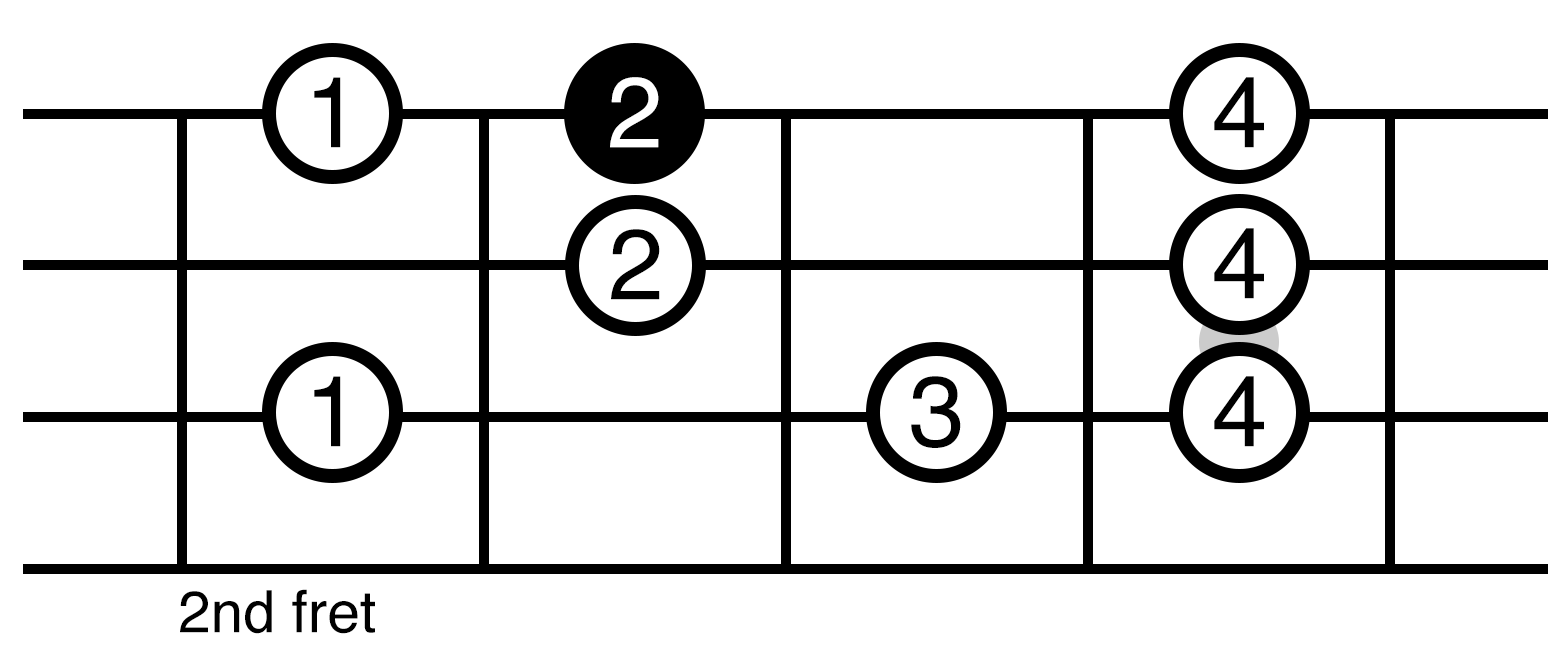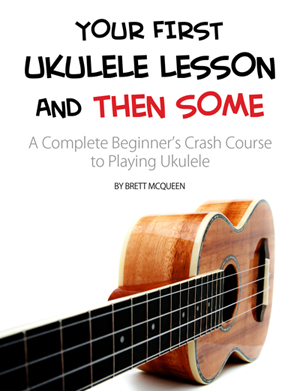Last week we looked at how to play a C Major Scale in Position #1 on ukulele. Today we continue on and learn C Major Scale in Position #2 farther up the fretboard (there are a total of five positions).
By learning the notes of C major scale in all positions, you learn all natural notes on the ukulele fretboard (A, B, C, D, E, F, G), or any note that is not an accidental (sharp or flat). When you learn all the natural notes, it’s easy to figure out where the other notes are later.
Learning the C major scale is the foundation of learning the notes of the ukulele fretboard and opens up future possibilities like:
- How to fingerpick the melody of a song on the fretboard
- How to build chords across the fretboard
- How to riff and improvise solos across the fretboard (like in the blues or jazz)
Let’s learn Position #2 now.
Watch the video to learn the C major scale in position #2 on ukulele and keep reading to discover the scale diagrams and notes in the position.
How to Play a C Major Scale in Position #2 on Ukulele
You’ll remember from learning C major scale position #1 that the beginning note of the scale was a ‘C’ note or the root note of the scale. Even more so, the end note of the scale was also a ‘C’ note but played an octave higher.
This produced an ascending and descending major scale sound.
But for position #2, the starting and end note of the scale is a ‘D’ note or the second scale degree in a C major scale.

C Major Scale Position #2 sheet music and ukulele tab
This means the scale position starts and ends on a D note giving it a different sound that doesn’t quite sound like a normal ascending and descending major scale.
This can throw a lot of beginners off.
This is why it’s important to know that even though this scale position starts and ends on a ‘D’ note, this is still considered a C major scale position because it contains all notes found in a C major scale: C, D, E, F, G, A, B.
And where Position #1 spanned frets 1 to 3 on the fretboard, Position #2 spans frets 2 to 5 on the fretboard.

C Major Scale Position #2 ukulele fretboard diagram
For the fretting hand, this means you assign the index finger (represented by the number 1) to the 2nd fret, middle finger to the 3rd fret (represented by the number 2), ring finger to the 4th fret (represented by the number 3), and little finger to the 5th fret (represented by the number 4).
In every scale position, you should always know where the root note of the scale is. This is because the scale always wants to resolve back to the root note. When it comes to soloing later on, knowing where the root note of the scale is key. Because this is a C major scale, the root note is the C note. In the above fretboard scale diagram the “filled in” dark circle on the 3rd fret of the bottom A-string indicates the root note of the scale – the C note.
How Learning Scales Helps You Solo
If you’ve followed along with me through this lesson and the previous lesson and learned these positions, give yourself a pat on the back!
Learning scales across the ukulele fretboard is not easy.
Mentally, it’s a challenge to remember all the notes. Physically, it’s a challenge for the fretting hand to know which finger to use to fret which note of the scale position.
Be patient with yourself and know that it takes time.
You’re probably wondering how learning scales like this equals you riffing and soloing across the fretboard.
After learning these five C major scale positions, we will look at riffing and soloing, but for now, it starts here with the goal of:
- Learning the natural notes of the ukulele fretboard. If you know where the natural notes are, it’s easy to “fill in” the sharps and flats later.
- Remember the fretting hand finger positions for each position. These positions repeat across different keys so building this muscle memory is key.
- Hearing and listening to the small differences in sound between each position. This ear knowledge is later used for super advanced jazz modal theory and soloing.
Trust the process of learning these scales. The work you put into learning and memorizing these positions will give you a strong upper hand in understanding the ukulele fretboard.
It all starts here!
Keep up the good effort and I’ll see you in the next lesson where you learn how to play position #3.

